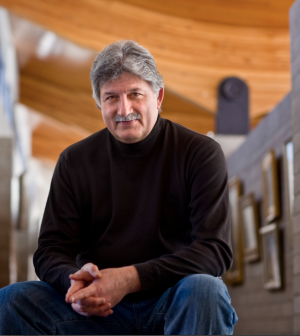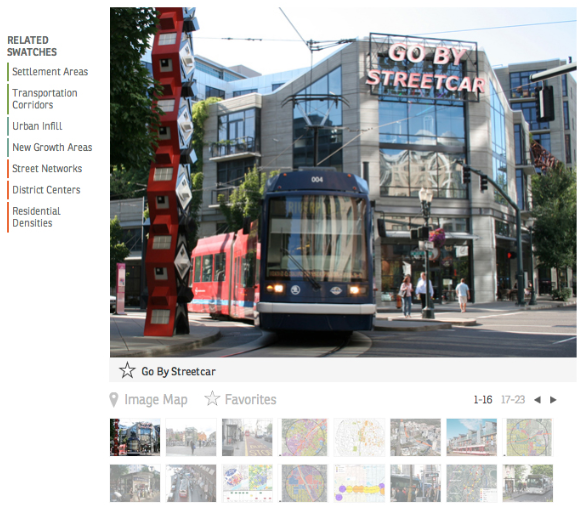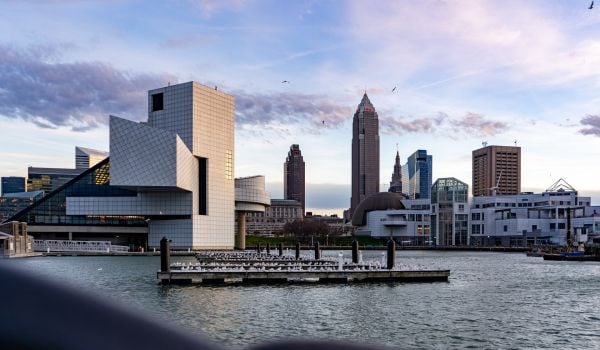This month, the Santa Fe-based non-profit Architecture 2030 will unveil a beta release of a new tool called the 2030 Palette. The free online platform aims to provide the building sector with a framework of best practices for creating more sustainable, low-carbon built environments. After a period of feedback, the Palette’s public launch is slated for this upcoming fall.
Here, Architecture 2030 founder Edward Mazria talks about the project, and how it fits into his organization’s larger goal of moving the architecture and building community toward carbon neutrality by the eponymous target year.
Next City: The 2030 Palette is divided into five categories: You have region, city or town, district, site and building. Can you briefly explain what these mean?
Edward Mazria: We’re trying to put out a set of guiding principles for decarbonized, resilient and sustainable built environments. That includes everything from regional planning issues to actual buildings and building components — essentially, the entire built environment. We are curating the best practices that exist today and putting them in a format that is freely accessible on the Web. That way, the information for sustainable built environment and a decarbonized built environment is all in one place. We can then link out to people who are doing the best work, everyone from building owners to some of the large architecture and planning firms.
The principles are as specific as we can make them and are organized into five different categories. We’ve identified a core set of principles and strategies — we call them “swatches”— that we’ll start with. But the Palette is intended to grow and change over time, so it’s essentially a living document on the Web.
NC: In any given municipality you have a master plan, zoning codes and building codes influencing city or town planners, developers, contractors and building owners. How can one get all these different actors, working at different levels and potentially with different interests, on the same page in terms of carrying out a sustainability framework?

Edward Mazria. Credit: Jamey Stillings Photography
Mazria: I think first you need the framework. You need a complete framework to see how all the parts fit together. Once you have that, and you can provide the guidelines, then you’re correct: It’s up to the players to actually implement the different pieces. What this does is it begins to move both the architecture, planning and design sector toward more sustainable practices. I think the players in the built environment — the architects and planners, the government officials, the planning department code officials — there is a great desire to move in that direction. We’re seeing a tremendous movement, especially in the U.S. and in a number of other countries.
For example, in the U.S. we’ve already reduced our emissions to 11.3 percent below 2005 levels [in the building sector], even as we’ve added square footage to the U.S. built environment. Our design and planning practices are beginning to pay off.
NC: From the website, I gather that the Palette is international in scope. With that in mind, does Architecture 2030 plan on actively appealing to different authorities around the world, whether they’re design firms or governments, to be open to its framework?
Mazria: Absolutely. What we’re aggregating transcends location. While they are applied locally and adapted to particular locations, the guiding principles can be applied anywhere. For example, all coastal cities or towns, or even regions, should map for various scenarios of sea level rise and storm surge. Where and how one generates a map depends on local conditions. The guidelines however, recommend mapping for half to two meters of sea level rise, and one to three meters of storm surge. The application is local, but the strategy is global.
NC: Speaking of storm surges, how have recent weather events, such as Hurricane Sandy, factored in?
Mazria: I think that the events of the last two years — including Hurricane Sandy, the drought in the West, the extensive forest fires we’ve been having out our way, some of the flooding events — I think have all played into the consciousness of the American public. And I think it’s had an effect, a pretty dramatic effect, globally.
We’ve felt the impacts over the past two years and are beginning to take not only more notice, but also [take] actions to reduce emissions and consumption of fossil fuels. The fact that we’re doing that now is really important, because there is still a window to act to mitigate and reduce the impacts of climate change so that they are manageable. My understanding is that if we wait too long, then they become unmanageable, and we reach tipping points beyond which it’s really hard to re-stabilize the global climate. So those events coming at this time, and one right after another, was a catalyzing time period.
NC: Is that where the 2030 target date comes from? With the idea that the window is still open, but quickly closing?
Mazria: Correct. What the scientific community has been saying is that we need to level out our greenhouse gas emissions globally. To stabilize our climatic system, we must reduce atmospheric carbon dioxide to approximately 350 parts per million [ppm] in the atmosphere. Right now, we’re at 391 parts per million (ppm). We’ve passed the 350 mark — a level that our scientific community has established to where our climate system is more or less stabilized. That means the ice sheets won’t melt and climatic conditions will more or less remain in the state we are used to.
So, 350 million parts is critical. We’ve now passed that, but scientists are telling us if we stabilize our emissions globally, and begin to reduce our emissions, then we can move ourselves back to that threshold. A critical date in that time period is 2030. We looked at the building sector, and then we developed the incremental targets of the 2030 Challenge to meet the scientific analysis on the projections needed to stabilize our climate.
NC: Much of the building that’s going to happen in the next two decades will happen in the developing world. I imagine that getting a city in the developing world to adopt a sustainability plan would be a much different challenge than it would in a country like Denmark. Is there a mechanism to account for that in the 2030 Palette?
Mazria: Well, there are a few things going on. Let’s talk about the 2030 Challenge first. Most of the large firms in the U.S. — more than 75 percent — have adopted the 2030 Challenge targets. Many of those firms are international in scope, so they work everywhere: In China, in India, in Indonesia, as well as in Europe and Latin America. That’s the good news.
Moving through our own community first, and then moving out to other countries, is going to be really critical. In 2007 we had a global webcast called the Global Emergency Teach-In, where we went live and discussed the issues in the building sector once we discovered them. We essentially alerted our community, our colleagues, all around the world to the issues of the built environment and why we were responsible for the major portion of the consumption and emissions in the world — as much as 70 percent or over 70 percent — and why it was a huge opportunity for us to undertake the crisis as our own, as an opportunity to redesign the world.
In fact, the world is going to be redesigned, reshaped and rebuilt over the next 20 years, or at least a major portion of it. During this time, we will build, and tear down and rebuild, about 900 billion square feet of building worldwide, mostly in urban areas. That’s an area equal to 3.5 times the entire built environment in the U.S. today. It’s a huge opportunity.
We will, once the Palette is public, begin to reach out to our colleagues in other countries through various organizations. Right now, for example, we support AI + 2030, a professional development series being conducted in 24 markets across the U.S. to teach practicing architects how to meet the 2030 targets and building design. It’s just gone into Canada, in Toronto, and now we’re planning a Latin American version.
NC: About 400 people signed up [for the Palette’s beta version] already. Have you started getting suggestions or submissions?
Mazria: As we beta-test, we ask for comments and photographs that illustrate the guiding principles within each swatch. People are submitting some photographs. A number of colleagues are commenting on different pieces of a swatch. We’re really asking the global architecture and planning community to help us gather the visual information that we need for the Palette. The Palette is essentially a visual language. Architects and planners work by using visual imagery to establish their conceptual designs. Any kind of new set of principles has to be visual in nature — with built examples that are out there globally, so that we can see how each one of these principles have been successfully applied.
















